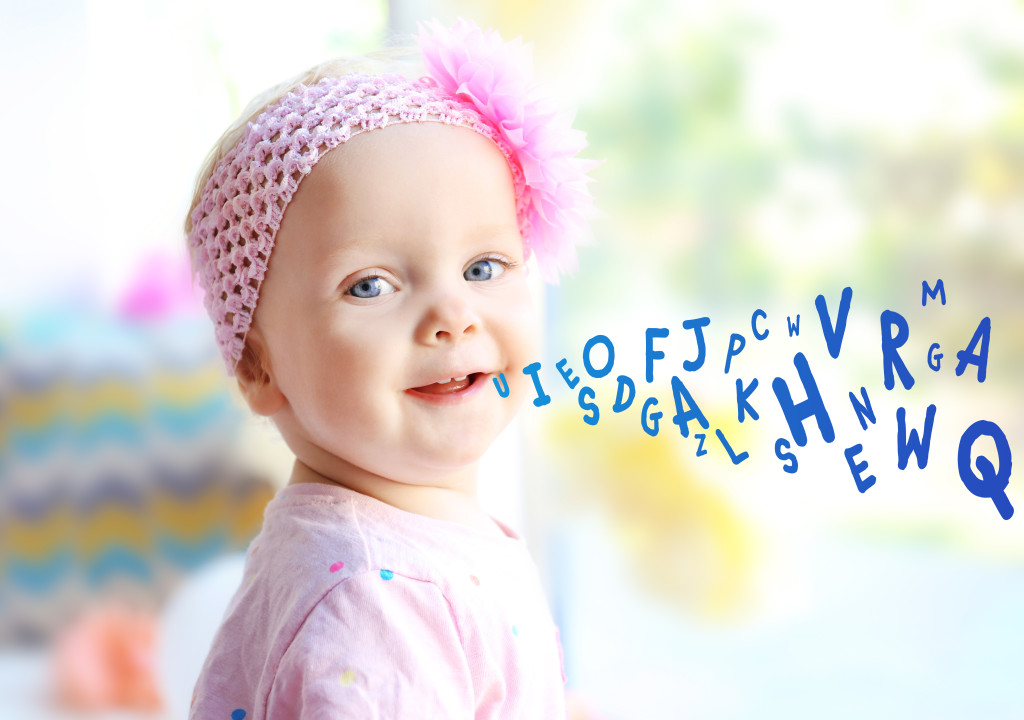Baby talk, or infant-directed speech, captivates the attention of infants, promotes emotional bonding, and aids in language development.
Babbling and giggling babies are rays of joy in life. We see them in a crib and instinctively want to hug them, cuddle them, and talk to them in a cute, ridiculous, high-pitched and exaggerated voice that seems to excite the babies even more! What is this voice all about, and why are adults so compelled to talk to babies in this manner? Is it instinct? And if so, does it serve any real purpose?
What Is Baby Talk?
In scientific literature, baby talk is called “parentese” or infant-directed speech, and is a unique way of communicating with babies. Classic baby talk will include speaking at a higher pitch, with exaggerated intonation, simplified vocabulary, and repetitive phrases. It has a sing-song or melodic quality to it, coupled with exaggerated facial expressions like big smiles and raised eyebrows.
In other words, you’re a sing-songy clown to your baby.
It often involves using repetitive and exaggerated sounds, such as “cooing” and “goo-goo,” along with using diminutive words like “baby,” “binky,” or “blankie.”
Adults also tend to speak more slowly and emphasize key words or phrases when engaging in baby talk.
Also Read: Do Babies Understand Physical Cues From Parents In Their Early Years?
Why Do We Instinctively Adopt This Baby Talk?
What’s the point of using such a ridiculous style of talking with babies? Why not just talk to a baby with normal speech, like we’d talk to another adult, or even a 5-year-old child?
Primarily, we use baby talk to capture the baby’s attention. The exaggerated vocalizations and facial expressions serve to engage the child’s focus by being distinct from all the other noise and visual stimuli around the baby. Remember, the brain of a newborn baby is still developing and needs different cues to engage and learn something.
Baby talk also helps to establish an emotional connection between the adult and the baby. The melodic and nurturing tone conveys affection, love, and care. As a result, in a way, it reassures the child by giving them a sense of security.
Do Babies Like Baby Talk?
Interestingly, there was a study where researchers tested 2,329 babies from 16 countries on their preference for this high-pitched, animated vocalization, and… drum roll, please… babies love it when adults engage in baby talk. Babies clearly prefer it when we ‘ooh’ and ‘coo’. The study also revealed that babies from almost all cultures have an inherent love for baby talk.
Baby talk tells the infants, “Hey! This speech is only for you, since you’re special,” and who doesn’t love that? It melts their adorable little hearts and warms ours.

How Does Baby Talk Help The Baby Learn Language?
Newborns can’t speak, but they come ready to learn. Evidence suggests that human brains are primed to absorb and process linguistic input. The melodic patterns and simplified language of baby talk help infants differentiate speech sounds and identify keywords, facilitating more efficient language development.
Vocabulary Development
Baby talk often involves simplifying and repeating words, which helps infants associate specific sounds with objects and actions. This repetition and emphasis on singular words help babies expand their vocabulary and comprehension.
Phonemic Highlighting
Adults who engage in baby talk often exaggerate specific sounds and syllables, emphasizing phonemic contrasts. This highlighting can aid babies in distinguishing between different phonetic elements, contributing to their understanding and eventual production of speech.
Also Read: Why Don’t Toddlers Speak In Complete Sentences?
Does Baby Talk Affect The Social Interaction Of Babies?
Nonverbal Communication
Baby talk encompasses more than just spoken words. It encompasses a range of nonverbal cues, such as facial expressions, gestures, and body language. The cartoonish expressions and flailing arms of adults certainly entertain these little humans. These nonverbal elements enhance communication with babies, as they are more attentive to visual and auditory cues at this stage, rather than the literal meaning of words.
Joint Attention
Baby talk encourages joint attention, a critical aspect of early social interaction. By adopting an engaging and animated tone, adults can attract a baby’s focus, fostering a shared attentional experience. This lays the foundation for social skills and communication development.

When Should We Stop Using Baby Talk?
Adults’ use of baby talk when conversing with babies captivates their attention, facilitates emotional connection, and supports cognitive and linguistic development. It is a testament to the unique bond between adults and their little ones.
However, it’s important to strike a balance between baby talk and normal adult conversation as babies grow older and their language skills develop. Gradually introducing more complex language and vocabulary is crucial for ongoing language acquisition. As children become more proficient in understanding and producing language, adults should adapt and advance their communication style accordingly.
Conclusion
Baby talk is a normal part of a baby’s growth, and one that helps establish connections for a lifetime of communication, understanding, and shared experiences. We’re not sure when the behavior started, but perhaps even prehistoric cavemen were saying goo-goo ga-ga to their babies.
So go ahead and enjoy those precious moments of silly sounds and exaggerated expressions. Who knows, maybe it’s not just the babies who benefit from the baby talk; it seems to bring out a childlike spirit in all of us.
How well do you understand the article above!

References (click to expand)
- Baby talk: Mini Parenting Master Class.
- The ManyBabies Consortium, Frank, M. C., Alcock, K. J., Arias-Trejo, N., Aschersleben, G., Baldwin, D., … Soderstrom, M. (2020, March). Quantifying Sources of Variability in Infancy Research Using the Infant-Directed-Speech Preference. Advances in Methods and Practices in Psychological Science. SAGE Publications.
- Babies love baby talk, all the world over | Stanford News.
- Ludusan, B., Mazuka, R., & Dupoux, E. (2021, May). Does Infant‐Directed Speech Help Phonetic Learning? A Machine Learning Investigation. Cognitive Science. Wiley.
